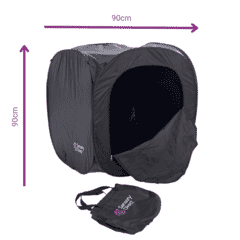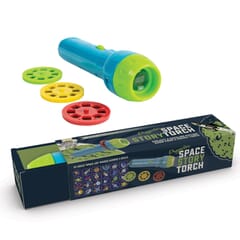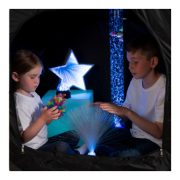Get exclusive deals you won't find anywhere else straight to your inbox.
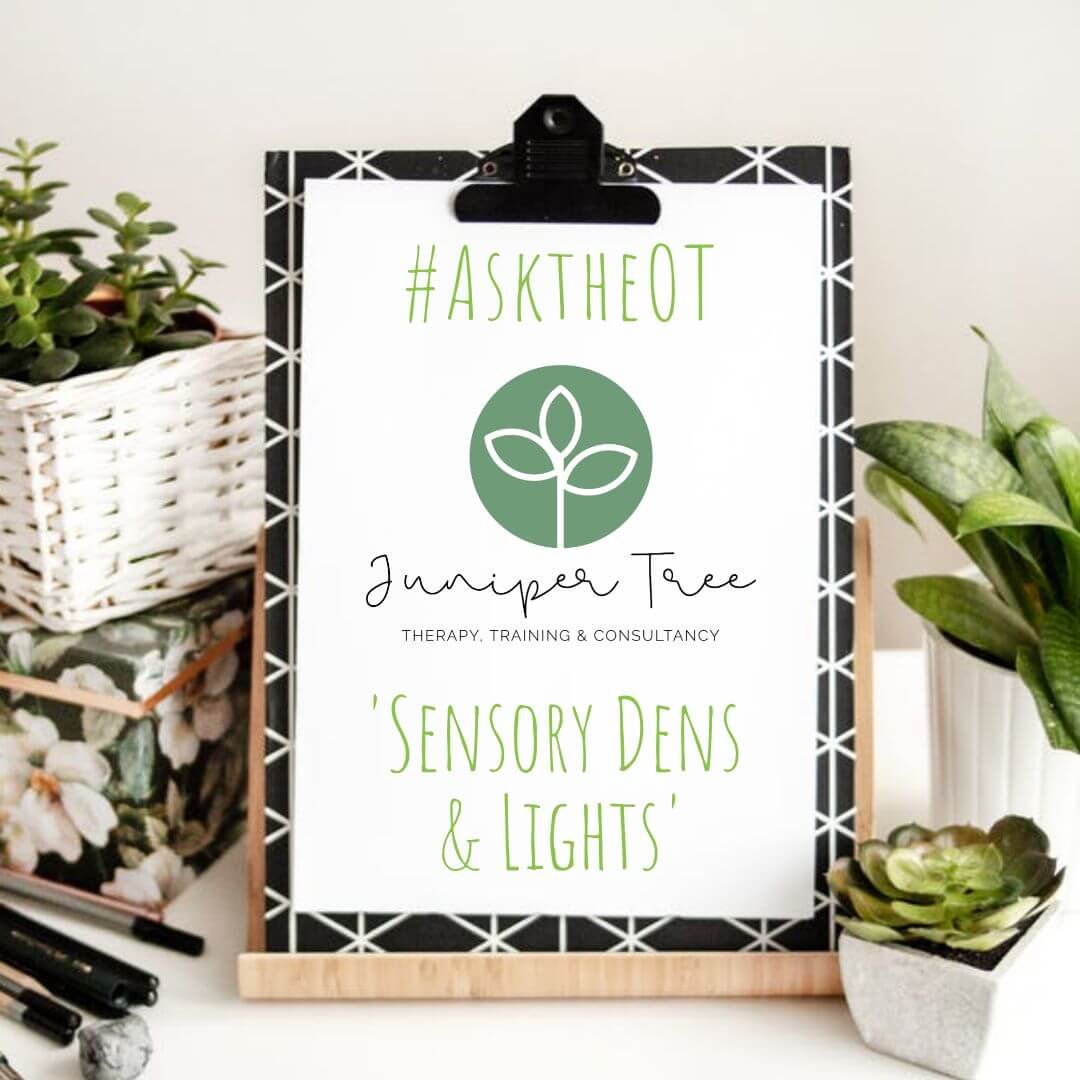
#AsktheOT- Sensory Dens And Lights
"We are so excited to launch our new #AsktheOT feature.
Working closely with a network of Occupational Therapists and Professionals throughout the UK we aim to provide help, support and advice across a range of topics".
Each quarter we will team up with a series of OT's and likeminded professionals to answer a series of questions across a variety of topics.
Why, we hear you say? Well, to put it simply, at Sensory Direct we aim to help people.
By providing professional support alongside our own personal experience and product knowledge, we can give the best support and advice to you.


For this first edition of #AsktheOT we were delighted to work with Emma Shedlow, Specialist OT and Joy Anderson, Advanced SI Practitioner from Juniper Tree Therapy.
We put them to the test and asked them 10 of our most frequently asked questions all about 'Sensory Dens and Lights'.
#1 I have never used a sensory den before – where do I start?
Firstly, consider if you think sensory dens might be helpful for your child!
We would often recommend them for children who:
- Become overwhelmed in busy environments – either distressed or hyperactive
- Concentrate or hold their attention better in more enclosed spaces
- Seek small, cosy spaces in their day – such as going behind a sofa or under a table
- Enjoy feeling contained and enclosed
- Have times of day they would benefit from being in a quiet, calm space- such as before sitting down for mealtimes, or before bedtime
#2 What can I use a sensory den for?
To provide a regulating, calming, and containing space for children.
They can be useful for those who might find bigger or busy spaces overwhelming. Such as times when there are lots of people or sensory stimulation in a bigger environment.
#3 What are the benefits of sensory dens?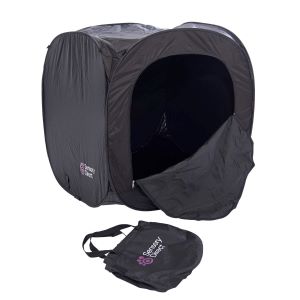
Sensory dens can help children to feel calm, contained, safe, and in control.
The smaller space is more predictable and has less distractions.
This can help the child to ‘re-set’ and feel safe in their body, and their environment.
They are adaptable and can be used in different rooms.
They can also be used in different settings like at home and at school.
#4 Can a sensory den help with autism and SPD?
Yes! There might be lots of reasons why a child with Autism or SPD might find the environment overwhelming.
It might be to do with their ‘sensory threshold’. For children who have a low sensory threshold, their nervous system can be ‘flooded’ with noises, feelings, sight, movement or smells.
Having access to a sensory den can help to reduce sensory input and allow the child to come back into a calm and alert state!
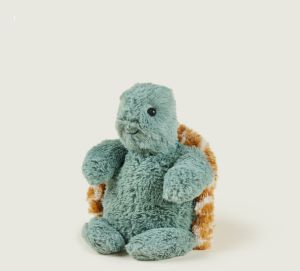 #5 What do you put in a sensory den?
#5 What do you put in a sensory den?
This depends on your child! You want to make the space as regulating as possible.
Some things to consider might be:
- Soft blankets and cushions
- Warmies
- Heavy teddies
- Fidget toys
- Stretchy toys
- UV lights and torches, or projectors
-
-
-
-
-
-
- Storybooks and reading lights
-
-
-
-
-
-
#6 Is there a suggested time limit for using a sensory den?
This would depend on the individual child and their sensory needs.
Their key adult should monitor the child to see when they have moved into a ‘calm-alert state’, which suggests they are ready to play, learn or engage again!
When an appropriate amount of time has been identified, it is important to gradually support the child to transition to their next activity.
We don’t want to undo the regulation they’ve achieved by making them anxious when they come out!
Consider a visual timetable, or timer, and explain when or where the sensory den is available, so the child knows when they can access it again.
#7 What are the best games and activities to play in a sensory den?
It depends on what tasks are motivating to the child- think about all the different senses and what can be offered for them.
For example, do they enjoy looking at visual input like light toys, exploring tactile input such as different fluffy or rough materials?
Do they like working their muscles with a fidget toy or exploring different smells?
Your child might get the most out of their sensory den by being in there by him or herself, or with their Key Adult (parent/ carer/ teaching assistant).
The den should be a low-stimulation space, so minimal demands should be placed upon the child.
They might benefit most from not playing games, and just being in this safe and calm space without any extra stimulation.
#8 What age can a sensory den be used from? 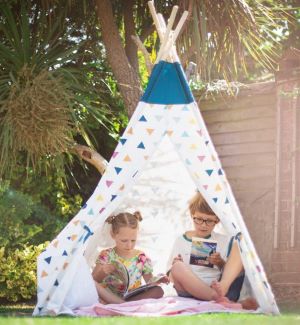
A sensory den can be used from any age with a Key Adult.
The main thing to keep in mind is that you should be able to see and supervise the child.
This may also depend on their age and any particular difficulties they might have.
#9 Can I use a sensory den outside?
A sensory den can refer to a specific product, or creating your own sensory den using chairs/ blankets/ furniture.
Whichever you choose to use, make sure it can be safely secured and won’t move or collapse.
#10 Do you have any tips on how to introduce a sensory den to my child who can be anxious of trying new things?
Don’t put any pressure on the child; simply make the den available in the first instance.
You shouldn’t ever cajole a child into accessing such a small space.
Ensure it is positioned well in the room so they can get in and out safely, without being bumped into or having busy ‘traffic’ nearby.
Your child may want the entrances/ exits/ windows to be angled towards the wider room so they can see what is going on, particularly if they are hypervigilant.
Or they may prefer the tent to be in a corner, so they don’t have to attend to their environment. Preferred items could be placed inside to encourage exploration of the space.
It might help the child to see others use it to understand how it works and what it can offer.
If you have any questions you'd love to feature in another #AsktheOT article, please get in touch at admin@sensorydirect.com.
Please note, this article provides general advice on a given topic(s), which may or may not be suitable for all conditions / circumstances.
For individual advice and support specific to you, we would always recommend seeking guidance from your Occupational Therapist.


